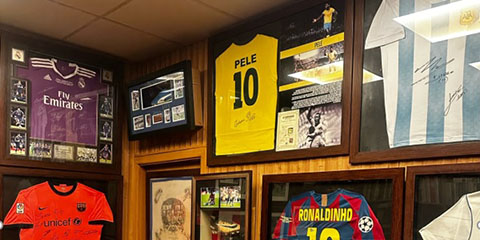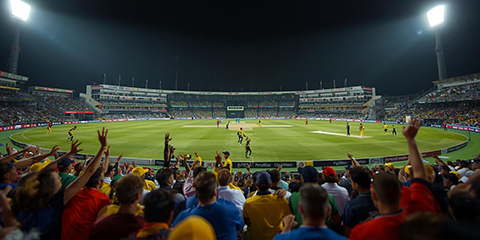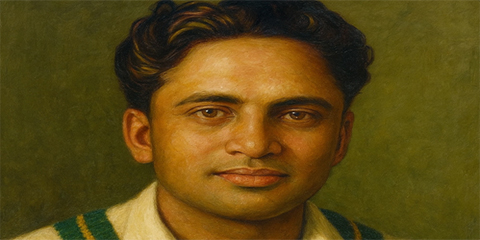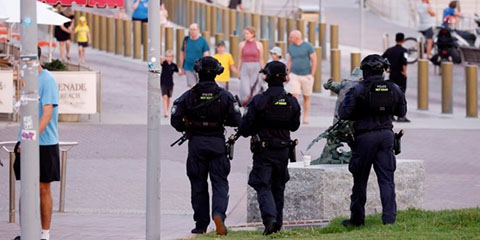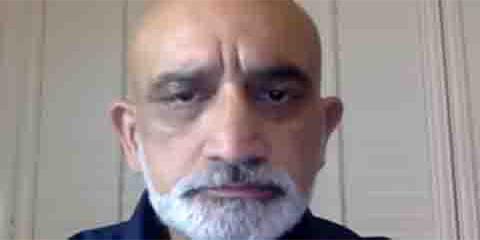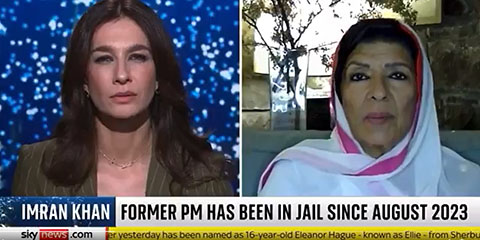From Partition to Test glory: How Anwar Hussain Khokhar started Pakistan cricket
JournalismPakistan.com | Published 4 months ago | Dr. Nauman Niaz (TI)
Join our WhatsApp channel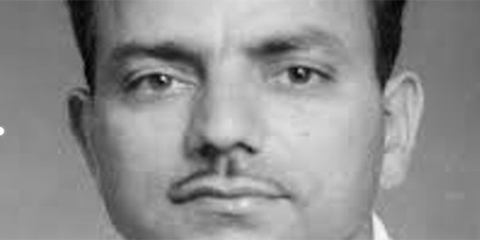
ISLAMABAD—He was not the kind to seize the crowd by the collar. He did not scorch afternoons with brilliance nor turn scoreboards into monuments. Anwar Hussain Khokhar lingered. He existed in the quiet folds between louder names and louder days, the sort of cricketer who appeared not in headlines but in the steady rhythm of the middle overs, holding together the frayed edges of an innings.
Pakistan's First Heartbeat in Cricket
He was not just Pakistan's first vice-captain; he was its first hesitant heartbeat. Anwar Hussain Khokhar's story began in Lahore, but his cricketing soul had already walked across invisible borders long before they were drawn on maps.
In those waning years of British India, when the game itself was a soft hymn in whites, he played for Muslims in the Pentangulars, for his city in the Ranji Trophy, his bat a narrow bridge between colonial civility and the looming rupture.
Cricket Through Partition: 1947's Defining Moment
Then came 1947, and the thrum of division—an unceasing drumbeat that rattled trains, splintered cities, and forced friendships to shed their skin. Cricket, too, was uprooted. The neat boundaries of teams were drowned in the chaos of new frontiers. Khokhar found himself not only crossing from one country to another but from one world into the next, his appointment as vice-captain in Pakistan's maiden Test an act that felt both ceremonial and defiant, as if saying: we have survived, and we will play.
Standing at History's Non-Striker's End
He was at the non-striker's end when Pakistan faced the first ball in its Test history, a position of both stillness and tension, like a man standing in the wings as a curtain rises on an unfamiliar stage. The partition had cleaved cricket into shards; the camaraderie of dressing rooms in Bombay and Delhi now belonged to a past tense, replaced by a dressing room heavy with the scent of new cloth, new caps, and the wary hope of a country still learning to speak.
In Khokhar's eyes, there was no triumphal blaze, only the quiet resolve of someone who understood that beginnings are rarely clean, they are stitched from loss, tempered by absence. He was the first vice-captain, yes, but also the last custodian of a cricket that had existed before the barbed wire, before the trains ran red. His legacy was not in centuries or averages, but in that singular gift: to stand, bat in hand, in the aftershock of a divided land, and begin again.
A Career Spanning Colonial to Independent Cricket
Over a career that stretched from the last murmurs of colonial cricket to the unsteady dawn of Pakistan's Test era, he became a craftsman of the interludes — those moments between drama, between crisis and calm.
His career was not a crescendo but a slow-burning ghazal, each stanza an innings, each refrain a small act of resistance against the anonymity that cricket so easily hands to its less spectacular servants. In the infancy of a nation unsure of its borders — geographical, emotional, spiritual — emerged a figure who did not merely play the game, but began it.
The First Ball in Pakistan Cricket History
Anwar Hussain Khokhar, born in Lahore, cousin to Mohammad Aslam Khokhar, was not simply present at the start of Pakistan's cricketing journey. He was the stillness before its first ripple. On a December morning in 1947, in a city where the wounds of Partition still hung raw in the air, Sind faced West Punjab in the first first-class match on Pakistani soil. Anwar was there, bat in hand, stance composed, facing the first delivery in the country's history. That ball was not just leather and seam — it was ceremony, responsibility, prophecy.
Building Pakistan Cricket Through Persistence
He was not built for folklore in the usual way. There was no blinding strokeplay, no outrageous seam movement. His value was in his persistence. He lived in the scorebook margins and in the memory's soft corners. In 1948, when the West Indians came with their sunlit swagger and the rhythm of Calypso in their stride, Anwar captained Sind and met them head-on. His 81 runs in the second innings — patient, upright, necessary — came alongside four wickets with a ball that relied on guile more than menace. That match was not just cricket; it was resistance art, an assertion that this fledgling cricket culture could produce players of backbone and skill.
International Recognition and Ceylon Tour
The following year, when Ceylon toured, Anwar again answered the call, sharing the new ball in an unofficial Test. There were no caps, no officialdom, but every over he bowled stitched Pakistan more firmly into the fabric of the international game.
The MCC Match That Changed Everything
Then came the crucible: Karachi, 1951. The MCC arrived not merely to play, but to judge. Pakistan's ambition for Test recognition was under scrutiny. Chasing 285 in the fourth innings, Pakistan were wavering at 178 for five. The gallery tilted towards disappointment. Then Anwar walked in to join Abdul Hafeez Kardar. Over the next 83 runs, they batted not for themselves but for the possibility of a nation's future in cricket's highest court. Anwar's 48 was no explosion of brilliance; it was an act of quiet defiance, anchoring Pakistan's four-wicket victory — a result that would help open the gates to Test status.
Pakistan's First Test Tour as Vice-Captain
In 1952–53, he was rewarded with the vice-captaincy for Pakistan's first Test tour to India. Four matches, scattered contributions with the bat, but always the steadying presence beside Kardar. His highest score, 17 at Madras, was stitched into an innings that carried Pakistan to 344. At Eden Gardens, in what would be his final Test, he made nine in the first innings, three in the second, and bowled just five overs — but found PK Sen's wicket with a neat stumping by Imtiaz Ahmed. Then, without flourish or farewell, he was gone from the Test arena.
The Mysterious End of His Test Career
Some whispered that politics — those subterranean rivers that run beneath every Pakistani institution — had claimed him. But Anwar never confirmed, never complained. His departure was as understated as his arrival had been symbolic.
Career Statistics and First-Class Records
His first-class career had begun in 1940–41 with Muslims and Northern India, a debut season of 54 runs at an average of 27.00. The war years saw him move between teams — Bombay in the Ranji Trophy, Northern India in the Pentangulars — his numbers quietly climbing. By 1946–47, he enjoyed his most prolific Indian season: 208 runs in seven innings at 34.66, with two fifties and a high of 72.
After Partition, he represented Sind in the new Pakistan, scoring 81 against the West Indians in 1948–49, his finest innings in domestic colours. In 1949–50, he managed 159 runs in three innings at a remarkable 79.50, with a top score of 76. His final seasons saw him represent Karachi and Pakistan, with his career tally rising to 1,556 runs in 45 first-class matches at 26.82, including a dozen half-centuries but never that elusive hundred.
Bowling and Wicket-Keeping Contributions
With the ball, he was an occasional yet useful option — 36 wickets at 38.72, his best figures 4 for 66. He was also a tidy wicketkeeper in emergencies, snaring 22 catches and three stumpings.
The Weight of Historic Beginnings
And always, there was that other thing: the symbolic weight of beginnings. Facing the first ball in Pakistan's first-class history. Opening the bowling in early representative matches. Standing with Kardar in the MCC game that helped secure Test status. Being vice-captain on the first Test tour.
For all the brevity of his Test career — four matches, six innings, 42 runs at 7.00, one wicket — the shape of his contribution to Pakistan cricket far exceeded the boundaries of his averages. He belonged to that small, vital group who built the road by walking it.
A Journey Across Teams and Eras
The teams he played for traced the evolution of cricket across borders. Muslims (1940–41 to 1945–46), Northern India (1940–41 to 1946–47), Bombay (1943–44 to 1945–46), Sind (1947–48 to 1948–49), Karachi (1954–55), and, of course, Pakistan (1952–53). Each team represented not just a region, but a phase in the game's transformation from colonial pastime to national institution.
Final Years and Legacy in Lahore
He died in Lahore on 9 October 2002, at the age of 82, after a battle with liver cancer. The city where he was born, where he first picked up a bat, and where he had faced that first, history-laden ball, was also the city where he bowed out.
An Immortal Place in Cricket History
Anwar Hussain Khokhar never made a century. He made something rarer: a place in the story of a nation's cricket that cannot be erased. He was a comma between eras, a bridge of bat strokes and silences, linking Lahore's shaded alleys to the dustbowls of pre-partition India and the grassy optimism of Pakistan's first years. His name may not be shouted in stadiums, but in the quiet conversations of old cricketers, in the margins of books, in the footnotes of cricket history, it endures — as the man who began it all.
Dr. Nauman Niaz is a civil award winner (Tamagha-i-Imtiaz) in Sports Broadcasting & Journalism, and is the sports editor at JournalismPakistan.com. He is a regular cricket correspondent, having covered 54 tours and three ICC World Cups, and having written over 3500 articles. He has authored 15 books and is the official historian of Pakistan Cricket (Fluctuating Fortunes IV Volumes - 2005). His signature show Game On Hai has been the highest in ratings and acclaim.




